About This Revised Edition Samuel E. Martins guide to learning Korean has firmly stood the test of time, as thousands of beginning learners continue to attest; his book has remained continuously in print since its original release in 1954. Its an extremely useful, compact guide thats especially aimed at tourists and visitors to Korea, and with more people now visiting Korea than ever before, we hope this new revised edition will be greeted with enthusiasm. This revised edition reflects several improvements, and some of the examples and phrases have been updated to reflect current usage. Korean text ( Hangeul ) is included throughout, and the romanization system follows the Korean governments most recent method. Two sets of native-speaker recordings for all Korean words and sentences are included in the disc (each word/sentence is read twice)these enable the reader to have an idea of how different people pronounce the same words.
The audios are grouped by lessons. We hope that Practical Korean helps you to succeed with the Korean language, just as its helped many others.  ABOUT TUTTLE
ABOUT TUTTLE
Books to Span the East and West Our core mission at Tuttle Publishing is to create books which bring people together one page at a time. Tuttle was founded in 1832 in the small New England town of Rutland, Vermont (USA). Our fundamental values remain as strong today as they were thento publish best-in-class books informing the English-speaking world about the countries and peoples of Asia. The world has become a smaller place today and Asias economic, cultural and political influence has expanded, yet the need for meaningful dialogue and information about this diverse region has never been greater.
Since 1948, Tuttle has been a leader in publishing books on the cultures, arts, cuisines, languages and literatures of Asia. Our authors and photographers have won numerous awards and Tuttle has published thousands of books on subjects ranging from martial arts to paper crafts. We welcome you to explore the wealth of information available on Asia at www.tuttlepublishing.com .
LESSON 1 Vowels The vowels and combinations of y or w with a vowel are pronounced somewhat as follows:
| i | as in mar i ne (m ee t, ch ea t) |
| wi | as in we (q uee n, bet wee n, s wee t) |
| e | This is pronounced identically to ae in modern Korean. |
| There isnt an exact English equivalent. |
| ye | Halfway between yay and the ye in ye s (or y eah ) |
| weh | More like the English word way , but about halfway to weh . |
| ae | The closest English equivalent is like the English ehsort of between ay and e. (2) At the end of a word it is pronounced like i . (3) As a separate particle meaning of , it is pronounced like e . |
| In this book, you will find the first pronunciation indicated as ui(i) and the second as eu i . |
| In this book, you will find the first pronunciation indicated as ui(i) and the second as eu i . But you will have to remember that the particle ui is pronounced like e . |
You will note that letters in Korean are not written independently as in English but rather are connected in syllables. Each syllable is read left-right and up-down, and some are only left-right while some are only up-down and some are both. Here are some examples: Left-right: (place marker) + ( a ) = ( a ) ( n ) + ( eo ) = neo Up-down: ( g ) + ( o ) = ( go ) (place marker) + ( u ) + ( l ) = ul Both: ( n ) + ( ae ) + ( m ) = naem ( j ) + ( i ) + ( k ) = jik Here are some common words to practice the vowels on:
| i | tooth |
| jip | house |
| gwi | ear |
| jwi | rat |
| dwi | behind |
| ne | yes |
| ye | yes |
| gyohoe | church |
| hoeui | meeting |
| Choe | Choe (name) |
| soe | iron |
| sae | bird |
| sonyeo | girl |
| agi | baby |
| hae | sun, year |
| maeil | every day |
| iyagi | story, talk |
| wae | why |
| mal | horse |
| bam | night |
| joreugi | badger; tighten |
| wanbyeok | perfect, perfection |
| gwanggo | advertisement |
| eumsik | food |
| eunhaeng | bank |
| geurim | picture |
| nun | eye; snow |
| mu | turnip |
| yuri | glass |
| dubu | bean-curd, tofu |
| gyuyul | regulations |
| meonjeo | first of all |
| eonje | when |
| neomu mani | too much |
| gyeongjehak | economics |
| geokjjeong | worry |
| won | won (currency) |
| ssaum | fight |
| don | money |
| sori | sound |
| gong | ball |
| pyo | ticket |
| hakgyo | school |
| uija | chair |
| uisa | doctor |
| uimi | meaning |
| jipjung | attention |
| uinon | discussion |
LESSON 10 Some Handy Nouns Korean nouns occur in three different types of construction: (1) Followed by a PARTICLE (Lessons ) which shows the grammatical relationship of the noun to the rest of the sentence whether it is the subject or object or place of the action. Hakgyo-ga keoyo. .
The school is big. Hakgyo-reul bwayo. . I see the school. Hakgyo-eseo gongbu haeyo. .
I study at school. (2) Followed by the verb ieyo equals : is (Lesson ) as the B part of the formula (A) = B. Geu geonmul hakgyo-ieyo. That (building) is a school. . (3) Before another noun or a noun phrase which it modifies (describes).
Hakgyo seonsaeng. . A school teacher. A Korean noun like chaek = book means all of these: a book , some books , any books , the books . You usually have to tell from the context whether the noun is plural, definite, or whatnot. There is a plural indicator deul = group often added at the end of a noun or noun phrase, but you cant count.
The plural deul ( ) is almost always used when referring to a group of people (e.g. , geu saramdeul it would be weird to just say geu saram , to mean more than one person). However, it is only sometimes used for other nouns, usually only when the speaker wants to clarify/emphasize that there are several of an object. Chaek deul means books but then so does chaek all by itself. Here are some handy common nouns:
| yeonpil | pencil |
| jongi | paper |
| sinmun | newspaper |
| dambae | cigarette |
| gabang | briefcase, suitcase, handbag |
| gongchaek | notebook |
| jip | house |
| maejeom | stand, small shop |
| sangjeom | store |
| jang, sijang | market | , |
| ucheguk | post office |
| eumsikjeom | restaurant |
| gongjang | factory |
| samusil | office |
| sang | table |
| chaeksang | desk |
| uija | chair |
| hwajangsil | toilet |
| jumeoni | pocket |

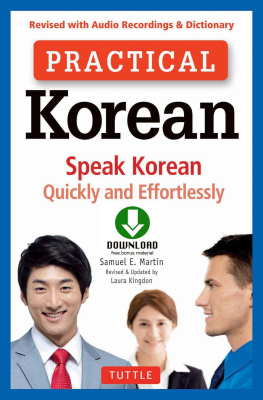
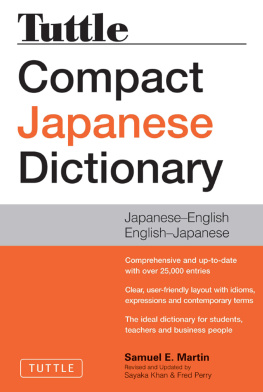
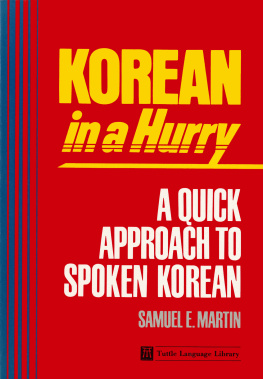

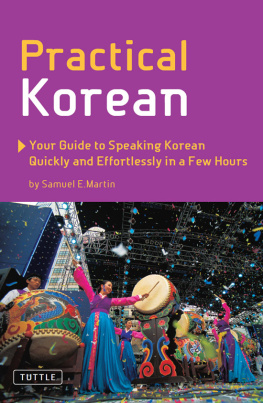

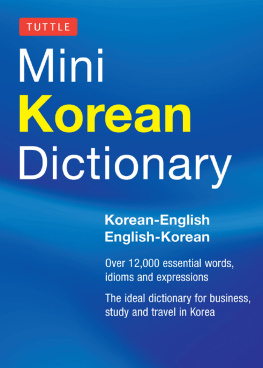
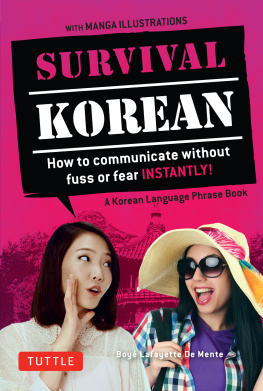

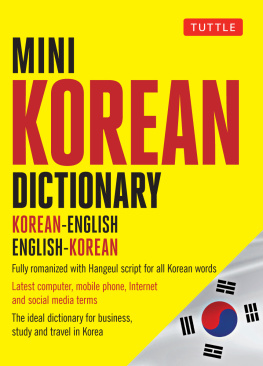
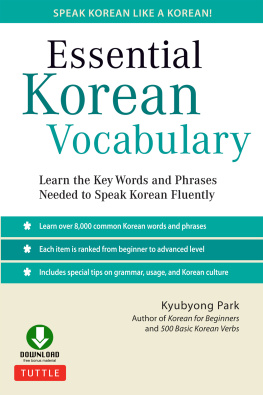
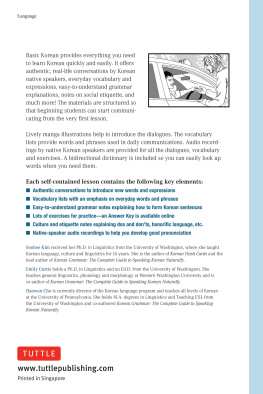
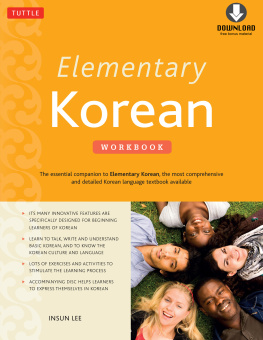
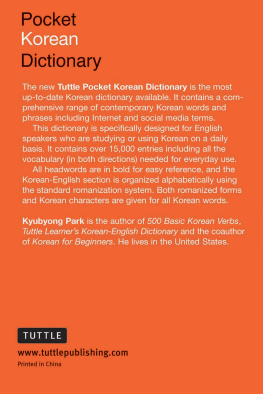
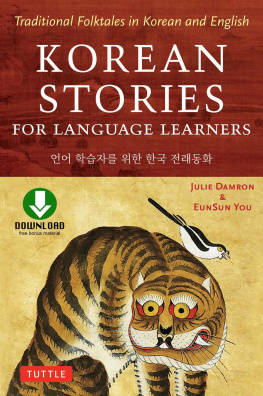
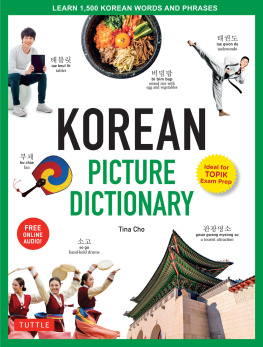

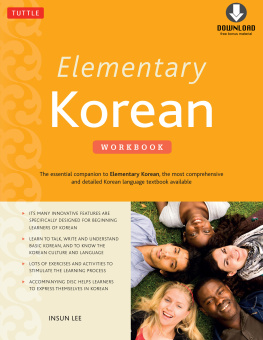
 ABOUT TUTTLE
ABOUT TUTTLE